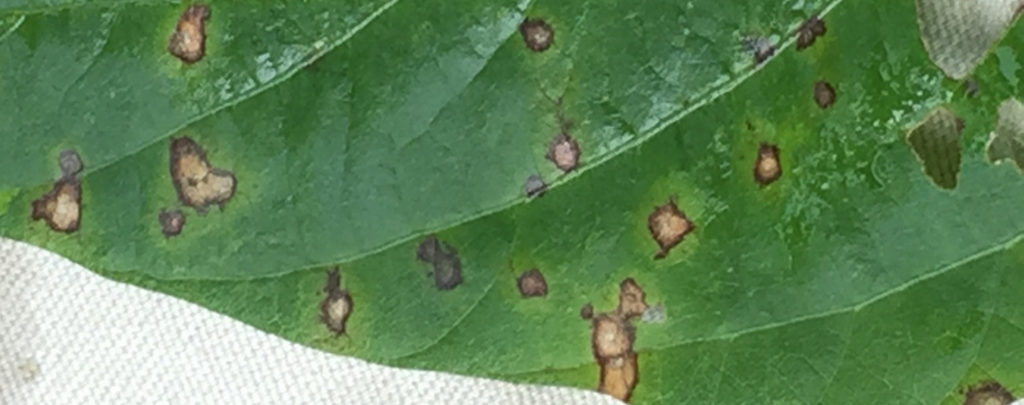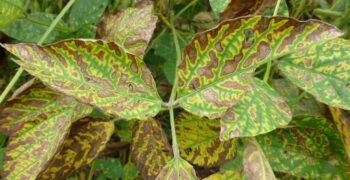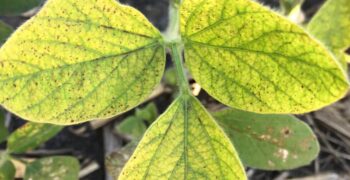Background:
Frogeye Leaf Spot is caused by the fungus Cercospora sojina. It is a common disease in the southeastern and north central United states. Infection can occur at any point during the growing season, but in most cases it will happen after flowering and symptoms of infection can be seen all throughout reproductive stages (R1-R7). Lesions are roughly ¼ inch in diameter and are a greyish to tan color with a brown to purplish halo around the lesions. Frogeye will prominently show up on the leaves of the plant but can also be seen on the pods and stems of the plant. Young leaves are the most susceptible to frogeye and most lesions will be in the upper canopy. Frogeye has shown resistance to Qol/strobilurin fungicides. Individual lesions can take up to 10% of leaf tissue and effect photosynthesis, robbing yield.
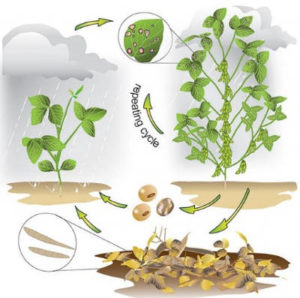 Scouting:
Scouting:
The first place to look for frogeye lesions are on the newest growth and in the upper canopy. The lesion will be round with a greyish to tan color with a brown to purplish halo around the lesions. Warm, humid weather promotes the growth of frogeye. It will take roughly a week from when infection occurs to when it appears on the plant tissue. The fungus survives in crop residue for at least 2 years. Seeds can also become infected, grey or brown spots or blotches can be seen on the seed.
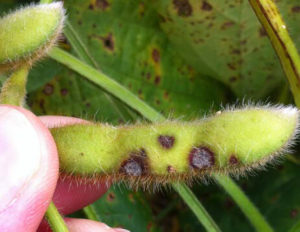 Management:
Management:
- Applying a fungicide between R1-R4 can reduce the impact that frogeye has on yield and seed quality. When applying fungicides, use multiple modes of action.
- Avoid continuous soybeans and use a rotation to help control the survival of the fungus. Rotate to a non susceptible crop such as corn or small grains.
- Tillage can help break down the fungus and bury infected residue.
- Plant resistant hybrids with the Rcs3 gene.
